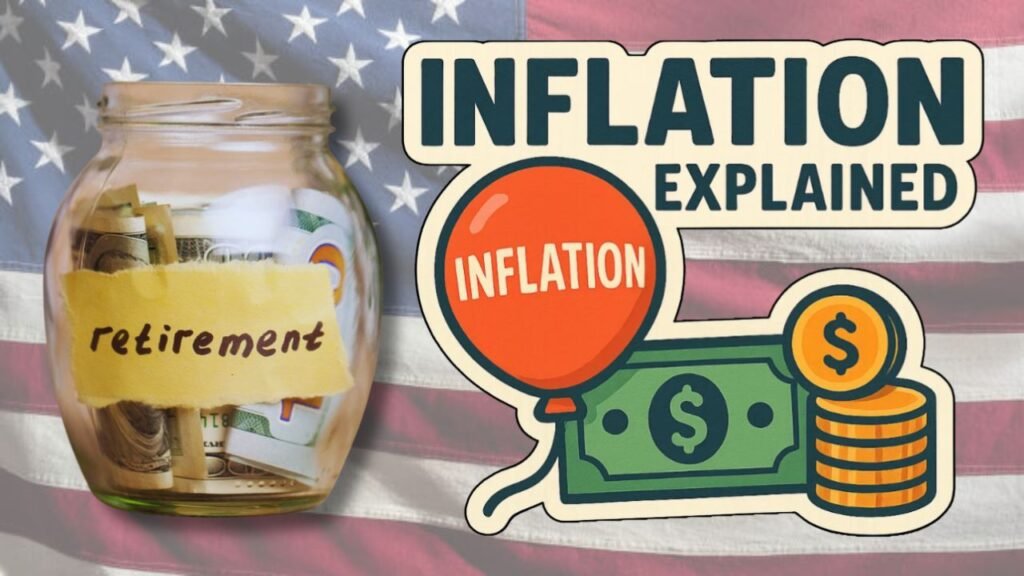Inflation is a persistent challenge for retirees. Unlike workers who may receive wage increases, retirees often rely on fixed incomes from Social Security, pensions, and savings. Rising prices for everyday essentials, healthcare, and long-term care gradually reduce purchasing power, making it harder to maintain a comfortable lifestyle. Understanding how inflation affects retirement funds and adopting strategies to preserve wealth is essential for financial security.
Table of Contents
How Inflation Affects Retirees
Inflation reduces the real value of money over time. A retiree who needs $50,000 annually today will require significantly more in the future to maintain the same standard of living. Social Security provides cost-of-living adjustments, but these may not keep pace with rising healthcare or housing costs. Healthcare expenses, in particular, often increase faster than general inflation, taking up a larger portion of retiree budgets. High inflation can also create market volatility, affecting investment returns just when retirees need stability the most.
Historical Examples of Inflation’s Impact

Over the decades, inflation has affected retirees differently. In the 1970s and early 1980s, double-digit inflation eroded savings rapidly, forcing many retirees to cut back on necessities. The 2000s and 2010s saw relatively low inflation, though healthcare and housing costs still strained seniors. From 2021 to 2023, inflation surged above 9 percent, surprising many retirees who relied on savings and increasing Medicare premiums. These patterns demonstrate that inflation is unpredictable, emphasizing the need for long-term planning.
Strategies to Protect Retirement Savings from Inflation
- Diversify Investments: Maintain a mix of stocks, bonds, and alternative assets to help offset inflation while managing risk.
- Use Inflation-Protected Securities: Treasury Inflation-Protected Securities (TIPS) and I Bonds adjust with inflation, offering stability.
- Consider Real Assets: Real estate, commodities, and infrastructure often rise in value during inflationary periods.
- Delay Social Security: Claiming benefits later increases monthly payments, which also grow with COLA adjustments.
- Manage Withdrawal Strategies: Flexible withdrawal rates tied to inflation and market performance help preserve savings.
- Use Annuities with COLA Riders: These increase payments over time, providing a predictable income stream.
- Control Spending and Budgeting: Reducing discretionary expenses during high inflation preserves funds for essential needs.
Example of Inflation’s Impact
| Inflation Rate | Annual Withdrawal Today | Annual Withdrawal in 20 Years |
|---|---|---|
| 2% | $50,000 | $74,000 |
| 5% | $50,000 | $132,000 |
Without proper planning, even a well-funded retirement account can be depleted faster than expected due to inflation.
Role of Social Security COLA
Social Security provides an annual cost-of-living adjustment based on the Consumer Price Index for Urban Wage Earners (CPI-W). While this helps maintain purchasing power, it has limitations. The CPI-W may not reflect actual expenses for seniors, and healthcare costs often rise faster than COLA adjustments. In years of low inflation, increases may be minimal or even zero, leaving retirees exposed to rising costs.
Common Mistakes Retirees Make During Inflation
Many retirees make decisions that leave their savings vulnerable. Keeping too much cash in low-interest accounts allows inflation to erode value. Relying solely on bonds can underperform during inflationary periods. Some retirees underestimate healthcare costs or delay adjusting withdrawal strategies, reducing the longevity of their savings.
Inflation is a real threat to retirement security, but proactive planning can mitigate its impact. By diversifying investments, using inflation-protected securities, considering annuities with COLA riders, and optimizing Social Security timing, retirees can preserve purchasing power and maintain financial stability throughout retirement.



